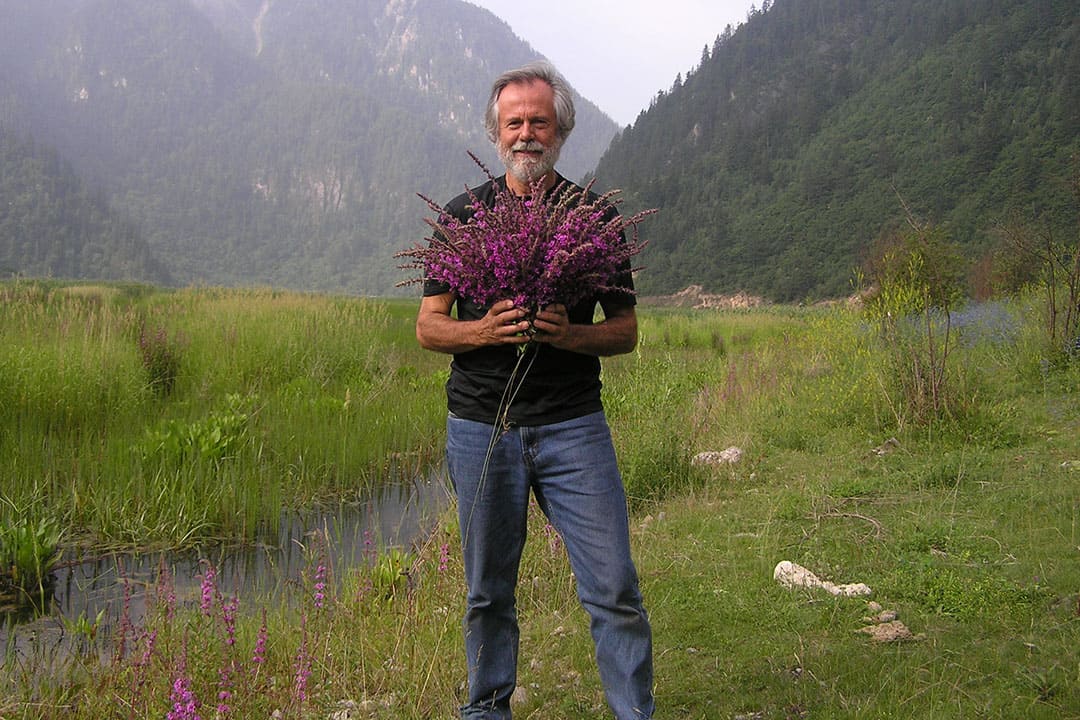As students, little did we know that a giant has been walking among us — or rather he’s putting on muddy boots to go trekking in China, South Africa, or the heart of the Canadian woodlands. Some may remember him fondly as the first face they knew in university, as the longtime instructor of BIO120 — Adaptation and Biodiversity, and others may recognize him as a mentor or collaborator.
This giant of the plant evolution world is none other than Dr. Spencer Barrett, who retired from teaching the iconic course in 2018. In an editorial in New Phytologist, Drs. Daniel Schoen, Marc Johnson, and Stephen Wright outlined the contributions of Barrett, who is currently a professor emeritus at U of T’s Ecology and Evolutionary Biology (EEB) Department, to academia in plant evolutionary biology.
Schoen is a professor at McGill University’s Department of Biology, while Johnson is a professor at UTM’s Department of Biology. Wright is the chair of U of T’s EEB department.
A professor’s impact on pollination research
Barrett worked on heterostyly — or, broadly-speaking, pollination — and it has remained a favourite topic of his.
In an interview with The Varsity, Barrett fondly recounted his favourite research discovery in his career: when he went out with a local naturalist in South Africa — one of his favourite things to do when he arrives someplace new — and observed red tubular flowers on the ground called Babiana ringens.
One would first infer that there should be hummingbirds to fertilize the flowers, but there were none. Furthermore, most birds do not like foraging on the ground as it leaves them vulnerable to predation. Through experimentation, Barrett and his colleagues discovered that the plant had evolved perches to attract nectar-sipping sunbirds. The researchers did variations where they’d cut off the perch to see if it would affect fertility — and it did.
As a young student, Barrett had become entranced with invasion biology. The number of invasive species in Canada has been steadily growing.
“Where do they come from and why are they invasive?” Barrett asked. In the editorial, Schoen, Johnson, and Wright wrote, “Here again he combined ecological, evolutionary and genetic approaches to understand how species succeed in novel environments.” Some novel results included how certain plant species mimicked crops.
Those who took the first-year evolutionary biology course may remember Barrett’s emphasis on genetic drift as a huge contributor to biodiversity and as an evolutionary mechanism that doesn’t get much credit — in contrast to natural selection, that is. This has always been the theme with Barrett: to broaden the scope, tackle the big questions, collaborate all over the world, and take in all perspectives to really understand the true implications of what’s going on.
Barrett’s research today with Wright includes his long-standing fascination with the evolution of plant sex ratios and reproduction. Why are certain plants inter-sex and others separate-sex? This is a condition known as dimorphism. Many crops of significant economic importance, such as marijuana, are separate-sex species and exhibit XY dimorphism. This enables producers to dispose of male marijuana plants during the commercial process.
It’s currently unknown why certain XY ratios exist in dimorphic species — plant or even human. “Why have [plants] evolved this way? What’s really going on here?” He utilizes genomics heavily to understand these plant populations.
“I worked on one of his garden experiments,” Wright laughed as he recounted his experiences with Barrett as a younger student to The Varsity. “He’s got a famous green thumb; he’d plant certain species in his front yard to see which and how many pollinators would come by at which flowers.”
Barrett’s impact on education
Wright emphasized that Barrett’s influence extends beyond botany, noting, “it’s definitely his teaching style and mentoring [too].” Barrett has a very specific style of big-picture, big-question asking that is very exciting. He teaches his students to holistically conduct themselves both in the lab and the field, and it is common to see both quantitative analysis and fieldwork in the same study, in both his own papers, and those of his students, often leading to novel results and insights.
Many of his first year students tend to complain that they do not see the point of studying evolutionary biology when they intend to pursue medical sciences. To that, Barrett cheekily said, “Any student that is not interested in the ecological and genetic processes that have given rise to the astounding biological diversity on planet earth — including of course the human species — strikes me as very narrow minded.”
“Being outside and observing the natural environment should be a cause of endless curiosity, even if your goal in life is to be a dentist!” he continued. “And actually, being taught by experts in the field as to how biological diversity arises and [evolves] through time should give one a much better appreciation of both life and death.”
Barrett believes that evolution is everywhere — antibiotic resistance, invasive species, our own ‘gut flora,’ — and, as we’re still evolving, so too are the species around us. It never stops; as long as we live and there is life, evolution is an unending, unnerving force that doesn’t discriminate and consistently progresses.


